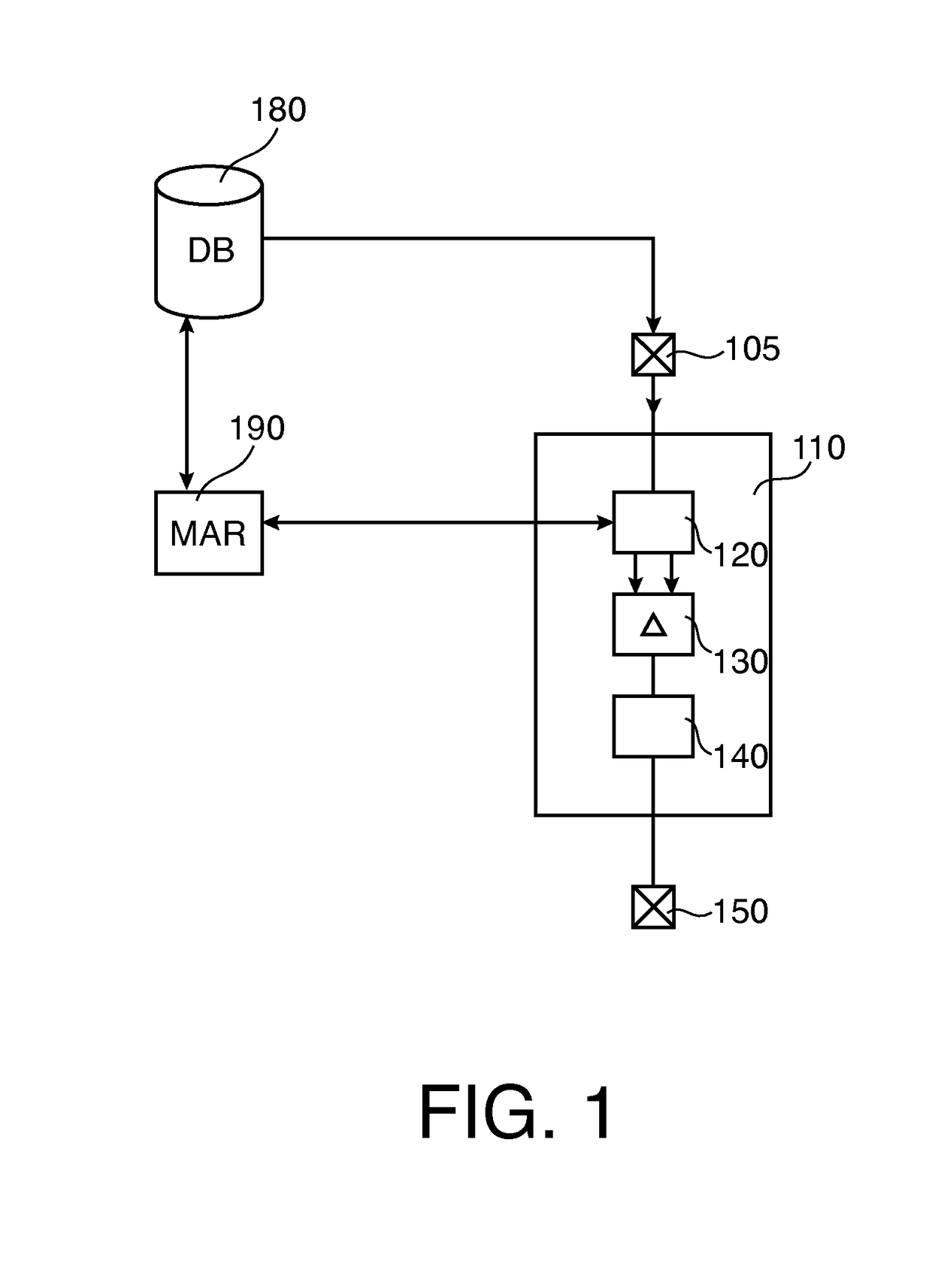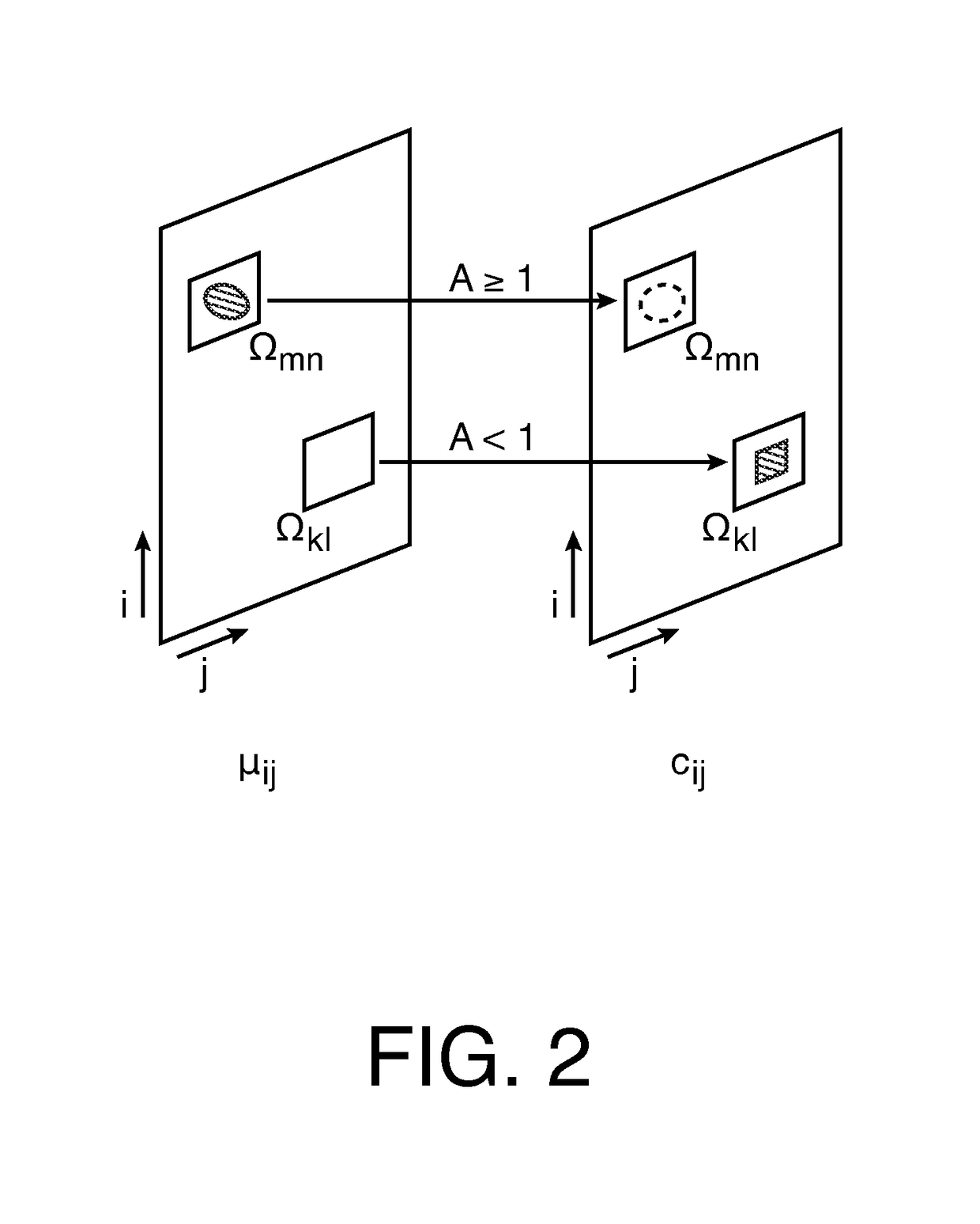Adaptive application of metal artifact correction algorithms
an image artifact correction and adaptive technology, applied in image enhancement, image analysis, instruments, etc., can solve the problems of image artifacts in ct images, and the best algorithms known so far occasionally create new artifacts, and achieve the effect of removing the corrective weigh
- Summary
- Abstract
- Description
- Claims
- Application Information
AI Technical Summary
Benefits of technology
Problems solved by technology
Method used
Image
Examples
Embodiment Construction
[0043]To the right of FIG. 1 there is shown a block diagram of an apparatus for correcting an image for an artifact.
[0044]The apparatus comprises an input unit or interface means 105, a processing unit 110 and an output unit or interface means 150.
[0045]Input 105 is configured to access a data base system 180 to retrieve therefrom an initial digital image having an image artifact.
[0046]Data base 180 may be arranged as a PACS in a medical facility and is holding medical image data such as 2D computed tomography (CT) projection images or reconstructed 2D or 3D cross sectional images, also commonly referred to as slice images or “slices”. The images are in a suitable digital format such as DICOM format. The apparatus is arranged to connect via interface means 105 and a suitable computer communication network to data base 180.
[0047]To the left of FIG. 1 there is shown an artifact corrector module MAR 190 implementing a known metal artifact reduction (MAR) algorithm. The embodiment of th...
PUM
 Login to View More
Login to View More Abstract
Description
Claims
Application Information
 Login to View More
Login to View More - R&D
- Intellectual Property
- Life Sciences
- Materials
- Tech Scout
- Unparalleled Data Quality
- Higher Quality Content
- 60% Fewer Hallucinations
Browse by: Latest US Patents, China's latest patents, Technical Efficacy Thesaurus, Application Domain, Technology Topic, Popular Technical Reports.
© 2025 PatSnap. All rights reserved.Legal|Privacy policy|Modern Slavery Act Transparency Statement|Sitemap|About US| Contact US: help@patsnap.com



